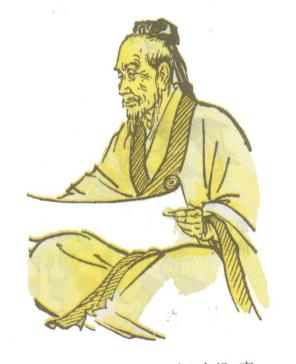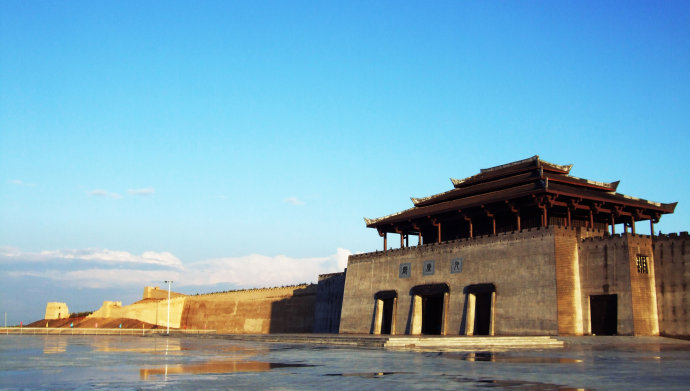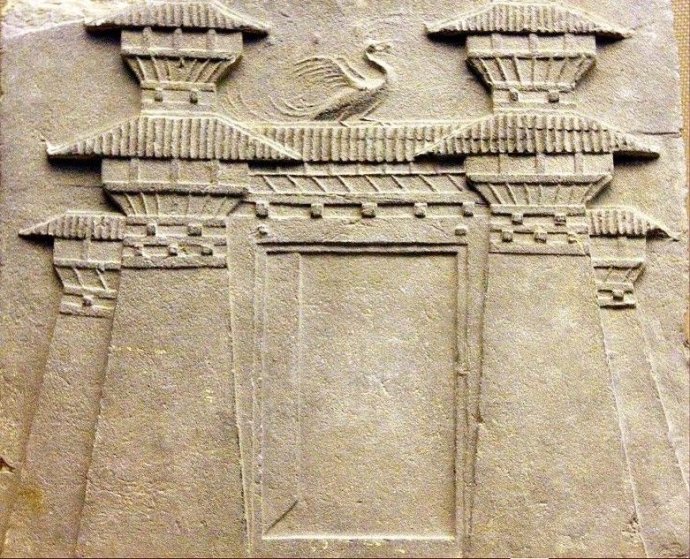Booming Culture in Qin and Han Dynasties
8 min readThe establishment of the unified country offered a fundamental foundation for sustainable cultural growth. The Qin and Han dynasties witnessed further advances of science and culture based on the great leap in pre-Qin period and the consequent prosperous situation featuring all-around cultural development.
The invention of the paper-making technique was the most prominent contribution made to human civilization. Chinese characters first appeared on pottery, tortoise shells and bronze ware, and later on bamboo slips and silk cloth, which were eitherheavy or expensive and made cultural spreading difficult. In the early Western Han Dynasty, workmen, while beating pods into silk, occasionally found that characterscould be written on the remaining silk membranes. Enlightened by the process, the Chinese people adopted flax as raw materials to produce the earliest plant fiber paper, which was still rough and not suitable for writing. In the Eastern Han Dynasty, the eunuch Cai Lun resorted to tree barks, flax cloth, rags, old fishing nets and other raw materials that were easy to acquire to make quality but cheap paper, which were called “Marquis Cai Paper.”From then on, paper was produced on a large scale and became the most popular material for writing.

China’s paper-making technique was first exported to Korea and Vietnam, and then to Japan in the 7th century, to Arabian counties in the 8th century and further to Europe in the 12th century. That played a significant role in worldwide cultural spreading, accumulation and communication, and had a profound impact upon the progress of world civilization.
The iron-smelting sector of the Han Dynasty remained as advanced as before. Quenching techniques were invented and coal was used as the fuel for smelting. In the Eastern Han Dynasty, wind power was utilized in metal smelting, and a low- temperature steel-making technique was invented and popularized as well. With regard to ship-making, more efficient sculls, more flexible stern steering wheels, cloth sails relying on wind power and firmer anchors were invented, leading to improved navigation techniques. With regard to the handicraft sector, the superb black porcelains made in the late Eastern Han Dynasty marked the maturity of porcelain-making techniques that were first initiated in China. Improving silk embroidery workmanship resulted in more diversified categories of embroideries with exquisite patterns and bright colors that were exported to East Asia and Europe in largequantities and reputed by the Romans as “the world’s No.1 fabrics.”With regard to measuring celestial bodies, Zhang Heng of the Eastern Han Dynasty invented theearliest “armillary sphere”that revolved with hydraulic power. He also invented a seismograph that could precisely measure the direction of earthquakes that occurredthousands of miles away-more than 1,700 years earlier than similar devices invented in Europe.

Unlike Greek classical mathematics that focused on theorem proving,ancient Chinese mathematics centered on algorithm creating,especially algorithms on solving equations.The Zhou Bi Mathematical Manual finished in the Western Han Dynasty,first records a special case in geometry known as Pythagorean Theorem,about 500 years earlier than that proposed in the west.The Nine Chapters on Mathematical Art written during the Eastern Han Dynasty was a collection of mathematical achievements from pre-Qin to the Han Dynasty,and was respected as the most important book of algorithms.The book records all the algorithms on practical problems closely related to production,including those about land areas,grains,trade,warehouse sizes,earthwork and tax,and summarizes ways of calculating positive and negativ numbers and solutions of quadratic equation.Its presence marked the formation of the ancient Chinese mathematical system in which counting rods were used as the calculation tool and the decimal system was adopted.The book was introduced to Japan in the Sui and Tang dynasties,and some parts of the book were spread to India and the Arab world,and even to Europe.
Many famous doctors and classic books emerged in the Han Dynasty. The YellowEmperor’s Classic of Internal Medicine during the Western Han Dynasty was a fundamental book of traditional Chinese medical theory. The book, which was comprised of two parts, had 162 articles in 18 volumes. It discussed basic theories concerning the body, physiology, causes of diseases, and diagnosis, as well as acupuncture, channels and collaterals, and health care. Emperor Shen Nong’s Materia Medica written during the Eastern Han Dynasty was a summary of drug use since the Warring States Period and laid a foundation for subsequent Chinese pharmacology.Zhang Zhongjing, known as the “Medicine Saint”in the Eastern Han Dynasty, proposed a set of traditional Chinese theories in The Treatise on Febrile Diseases, including the three causes of diseases, and treatment according to syndrome differentiation. Hua Tuo,a highly skilled doctor in the Eastern Han, invented Mafeisan, the earliest surgical anesthetic, performed the first abdominal cavity operation in China, and invented the five-animal health care exercise.

Against the backdrop of unification, the official mainstream ideology in the Qin and Han dynasties experienced a transformation process from “contention of a hundred schools of thought”to “paying supreme tribute to one thought while banning all ways of spreading other schools of thought.”The thought of legalists in the Warring States was adopted by Emperor Ying Zheng as a sharp tool pushing for the reform and, based on abandoning Confucianism and absorbing part of the diverse thoughts of many schools, further became the dominant ideology guiding the politics of the Qin Dynasty after the unification.
In the early western Han Dynasty, the economy was seriously damaged and a host of neglected tasks cried for attention. Faced with the rehabilitation policy, the intellectual field was relatively loose and the philosophy of Huang Di and Lao Tze prevailed. During the term of Emperor Wudi, ideological control intensified as thepolitical situation became more stable and the economy prospered. Dong Zhongshu,a representative of Confucianism, put forward the opinion of “paying supreme tribute to Confucianism while banning all other schools of thought”and “banning all ways of spreading other schools of thought”except Confucianism, which he believed could make the people know what to obey and thus safeguard the ruling of the emperor.
Emperor Wudi accepted his suggestion and established it as a national strategy. The new Confucianism of Dong Zhongshu, in fact, was a new ideological system shaped by combining many schools of thought like Yin-Yang School, Taoism and Legaism, based onConfucius’ political outlook of maintaining the hierarchical system and the thought of unification highlighted in The Kung-Yang Commentary of the Spring and Autumn Annals. Dong Zhongshu claimed that “social norms originate in the nature, and no changes in social norms shall happen without changes in the nature.”He advocated that “regality is awarded by the heaven”based on the theory of “induction between the heaven and man.”He also warned that if the emperor was brutal in his rule, the heavens would send calamities to condemn and deter the emperor. Therefore, the emperor must observe the way of the heavens and exercise benevolent rule. Dong emphasized that the emperor should rule the country with benevolence at its core and punishment as supplementary, and put forward the ethical norms of benevolence, righteousness, propriety, wisdom and fidelity. The three cardinal guides-the ruler guides his subjects, the father guides his son, and the husband guides his wife-
were the cardinal guides that could not be changed.
“Paying supreme tribute to Confucianism while banning all other schools of thought”is an important event in the history of China. Confucianism occupied a dominant position in politics, which was conducive to consolidating the unified country and stabilizing the ruling order. Since then, Confucianism became the required course of all schools and the assessment standard for the court to select officials. Thus the dominant position of Confucianism was established in the traditional culture of China.
Terracotta warriors and horses in the tombs escorting the Mausoleum of Emperor Shihuang of the Qin Dynasty.
The Records of the Grand Historian, written by Sima Qian, and The Book of Han, written by Ban Gu, were two famous historical books arising from the time of unification. Sima Qian, once the Prefect of the Grand Scribes and the Chief of the Secretariat during the regime of Emperor Wudi, compiled the first general history of biography in Chinese history by absorbing part of previous historical books and thought of many schools, making use of the files collected by the State and conducting field investigations and interviews. The book includes 130 chapters andmore than 500,000 words, recording all the major historical events during the past3,000 years from the legendary Huangdi to Emperor Wudi. It could be used to “study the relationship between humans and nature, understand the changes both in the past and at present and thus help shape unique and deep insight.”The Records of theGrand Historian marked the fresh start of narrating historical events, systems, human activities and social changes by combining multiple ways of recording, including Ben. ji (biographical sketches of kings), Biao(tables), Shu (records of systems), Shijia(records of vassals) and Liezhuan (biographies), and thus became the model for compiling historical books. The Book of Han written by Ban Gu was the first book of dynastic history, offering detailed and in-depth descriptions about the social evolution of the Han Dynasty.
The achievements of literature in the Han Dynasty were best reflected in the creation of Fu of the Han Dynasty and Yuefu. Fu is a kind of rhyme that combines the rational spirit of The Book of Odes before the Qin Dynasty with the romantic expression of the Chu odes. Fu attaches importance to expatiation, parataxis and magnificent wording. Sima Xiangru and Yang Xiong were the most notable writers of Fu. Their works reflected the spirit of aggressive union of the Han Dynasty.
Yuefu was the musical department established during the reign of Emperor Wudi of the Han Dynasty. Poems collected, sorted and recorded by Yuefu department were called Yuefu poetry, which inherited and developed the excellent tradition of the folk songs in The Book of Odes and had lively language and various forms. The Terracotta Warriors and Horses of Emperor Shihuang of the Qin Dynasty manifested the outstanding artistic achievements made in the Qin and Han dynastieswith their exquisite artistic shapes and spectacular scale. Nearly 10,000 pieces of terracotta warriors and horses, all the same size as real ones, have different appearances and postures and were extremely vivid and lively. Inside the 14,000-
square-meters No.1 pit is a huge army consisting of 6,000 terracotta warriors and horses, more than 40 chariots and 160 driving war horses. The army is “marching”
eastward with the momentum of an avalanche like a living army, reproducing the gallant manner of the troops of Qin that bravely fought against
Wei,Jin and Southern and Northern Dynasties:Regime Division and Ethnic Concentration








